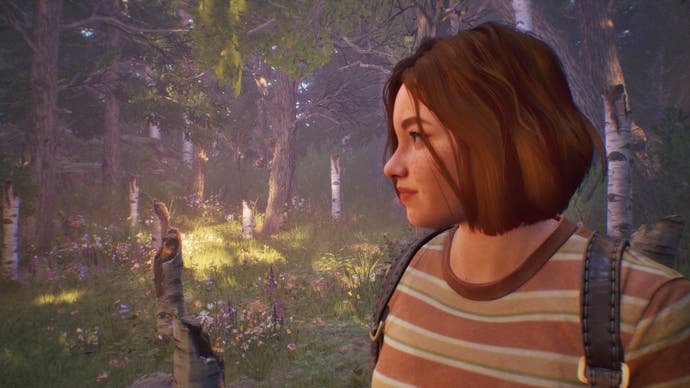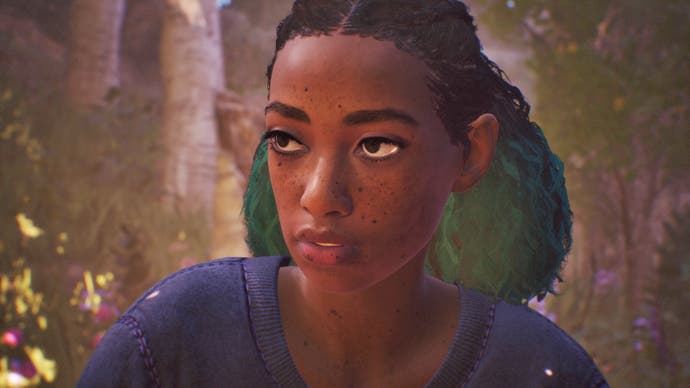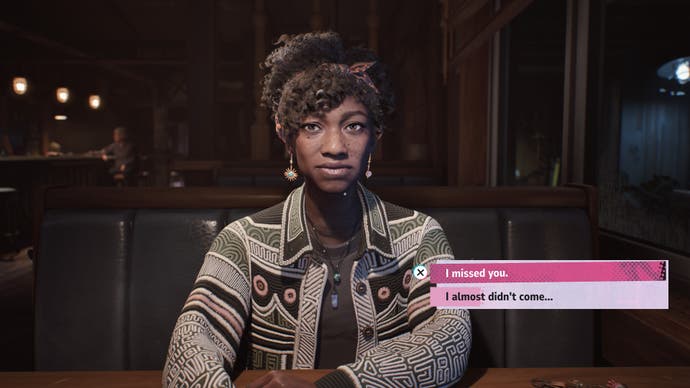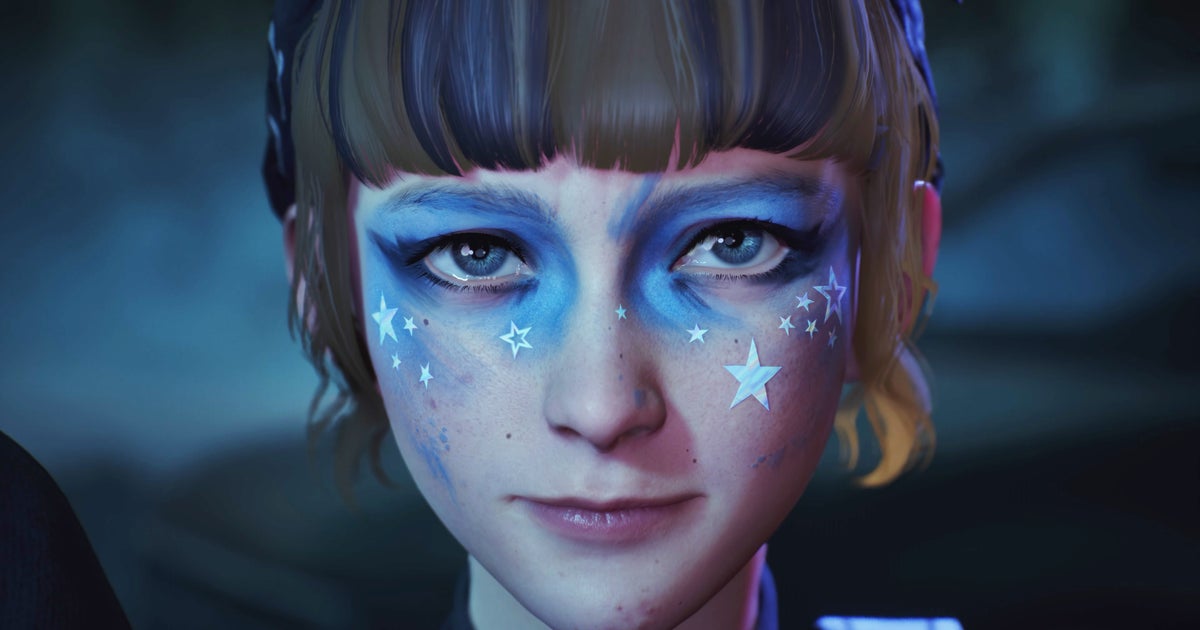It’s been five years since the end of Life is Strange 2, Don’t Nod’s impassioned but sometimes meandering roadtrip tale. Ditching the small town trappings and blue-haired fan-favourite from the series’ original story was a bold move for the developer, and a deliberate push for a different-feeling sequel. But while Life is Strange 2’s episodic study of American social issues and the changing relationship between two young brothers had some impressive moments, it also felt like too much of a curveball for some fans, who had expected a more familiar follow-up. It was at this point that Don’t Nod and its Life is Strange series permanently parted ways, leaving future franchise entries to be developed by other hands.
Video tape static, flash forward to present.
Enter Lost Records: Bloom & Rage, the Life is Strange creators’ next project that has been in the works ever since (with its first half available today, while its concluding portion drops as a free update on 18th April). Its arrival has taken some time, not least because its team moved continents, setting down new roots in Montreal and separating itself off from the other bits and pieces Don’t Nod’s Parisian headquarters has put out in the meantime. There was a pandemic, of course, and the game was further delayed last year, rather incredibly, to avoid a clash with Square Enix‘s latest new Life is Strange entry.
Impressively, though, it’s clear Lost Records feels like the product of those five years in the oven – with several new ideas that freshen up the now-familiar narrative adventure formula. The most obvious of these is the game’s camcorder wielded by protagonist Swann, a painfully awkward 16-year-old who uses videography as a tool to engage with the world. It’s the summer of 1995, and Swann is set to leave her sleepy Michigan hometown in just two months’ time. Before then, she begins a project to capture her surroundings on film, something which allows her to finally find a true friendship group – and allows the player to interact with and document the game’s three other main characters.
Swann’s camcorder is Bloom & Rage’s key gameplay device, a way to gather evidence or interview other people, and there’s a smart system where the game can intuit who or what you’re looking at through its camera lens. Finding and recording objects is necessary to progress the plot, as well as to complete myriad collectible sidequests, and also adds a further layer to Swann’s surroundings for you to investigate. Think you’ve uncovered every clue or story thread around you? Look through your camcorder and you’ll often see something else highlighted that you can tape. There’s an element of encouraging player expression here too, with footage re-recordable for that perfect shot, then available for rewatching and grouping into collections for which Swann then provides a voiceover.
A similarly intuitive system comes into play during conversations, which are another step up from Don’t Nod’s past work. Much of the game features Bloom & Rage’s main quartet on screen, with dialogue naturally responding or overlapping in a way that makes you feel in the centre of it all – and part of the banter within a circle of friends. It’s most similar to the discussions in Oxenfree, except laid out here across a 3D space, and the game pulls off the fine balance between making things feel impressively interactive without ever being too fiddly to handle.

As chatter goes on around you, Swann’s dialogue options can time out or multiply as the conversation evolves, with additional responses sometimes available if something else is said that might change how you react. In several circumstances, further responses can be unlocked by looking around a scene as you’re speaking (put on the spot to choose a favourite music star, for example, Swann can cast about the nearest band posters on the wall). As you’d expect, some dialogue options will help build stronger bonds with the game’s core cast, while others will erode Swann’s burgeoning friendships. Other options, meanwhile, will simultaneously strengthen your bond with one friend, while frustrating another. Finally, later in the game, you’ll see additional dialogue unlocked based on your relationship with each of the core cast, depending on how close you’ve become.
For Life is Strange fans seeking to stoke a similarly strong connection between Bloom & Rage’s characters as that of Max and Chloe, rest assured that the move to feature a quartet rather than a core duo is a successful one. It’s another strength of the game, as it sparks more choices and additional complexity within the group as its members bond ever closer together. Swann’s friends include Nora, a punky and slightly older teen who hates The Man but wants nothing more than to be famous. Autumn, meanwhile, is Nora’s more rational counterpart, who already has to balance a part-time job to get by. And then there’s Kat, a fierce girl with a complex family background, who is particularly driven towards the game’s mysterious supernatural forces.
Yet another addition to Bloom & Rage’s story is its dual timeline aspect, which sees its characters reconvening 27 years’ later – together again for the first time since that summer. The game’s teenage timeline begins as a slow burn, and takes some time to build its character relationships or indeed introduce anything out of the ordinary. But this modern day framing does help to drive suspense – as it quickly becomes clear that Swann and her friends’ time together ended suddenly with Something Very Bad happening. An ominous package has turned up addressed to the group as adults, which introduces tropey shades of I Know What You Did Last Summer, wrapped up in a JJ Abrams-like literal mystery box. But I was also reminded of the more nuanced moments from The Haunting of Hill House here, where the audience’s understanding of these characters is enhanced by seeing the impact of past events, years down the line. I can’t remember the last time I felt this engaged playing a game featuring a group of 40-somethings simply sitting around a table, and there are some poignant moments as the former friends reflect on their youth.


The technical side to the game’s quick scene-switching is impressive, with rapid scene changes back and forth between teenagers and adults in different settings masked by just a second or two of video tape static. I was less sold, though, on the game’s lack of clear explanation for why the adult characters were conveniently unable to remember events – including some big revelations – until you had played through them in the past. Finishing the episode, you may sit back and think, ‘Well, why didn’t they talk about X at the very beginning?!’, and I am not sure if the answer here is plot-relevent amnesia or the characters dealing in-game with the effects of Lost Records’ supernatural elements.
This being a Don’t Nod narrative adventure game, there are numerous familiar story tropes. Of course, you can spend time exploring your bedroom. There are antagonists, and eventually they become somewhat nuanced. And yes, there is some sci-fi/magic realism at play. Unlike Life is Strange, though, there are no gameplay superpowers, and the supernatural forces that are present are treated – for the most part – with a light touch. Things may well change over Bloom & Rage’s concluding half, but at its mid-point there is already plenty going on without the game needing to lean too much further into it (something which, after the ending of the last Life is Strange game, would make for a refreshingly different approach). Indeed, the question I most want answered, in the wake of Tape 1’s fairly shocking climax, is nothing magic-related at all.
Suffice to say, then, it’s going to be a long couple of months until Tape 2 arrives to conclude Bloom & Rage’s tale. The game’s split-launch is something of a compromise, it feels like – between the many-episode arcs of the original Life is Strange games that prompted fan discussion between releases, and the need to also conclude the tale relatively quickly, without too long a wait for audiences now accustomed to Netflix binges. What’s here already, though, is an intriguing mix of familiar and new – not an offbeat roadtrip, and not just another high school adventure. After such a lengthy wait, it’s great to see such a confident return.
A copy of Lost Records: Bloom & Rage was provided for review by developer Don’t Nod.
